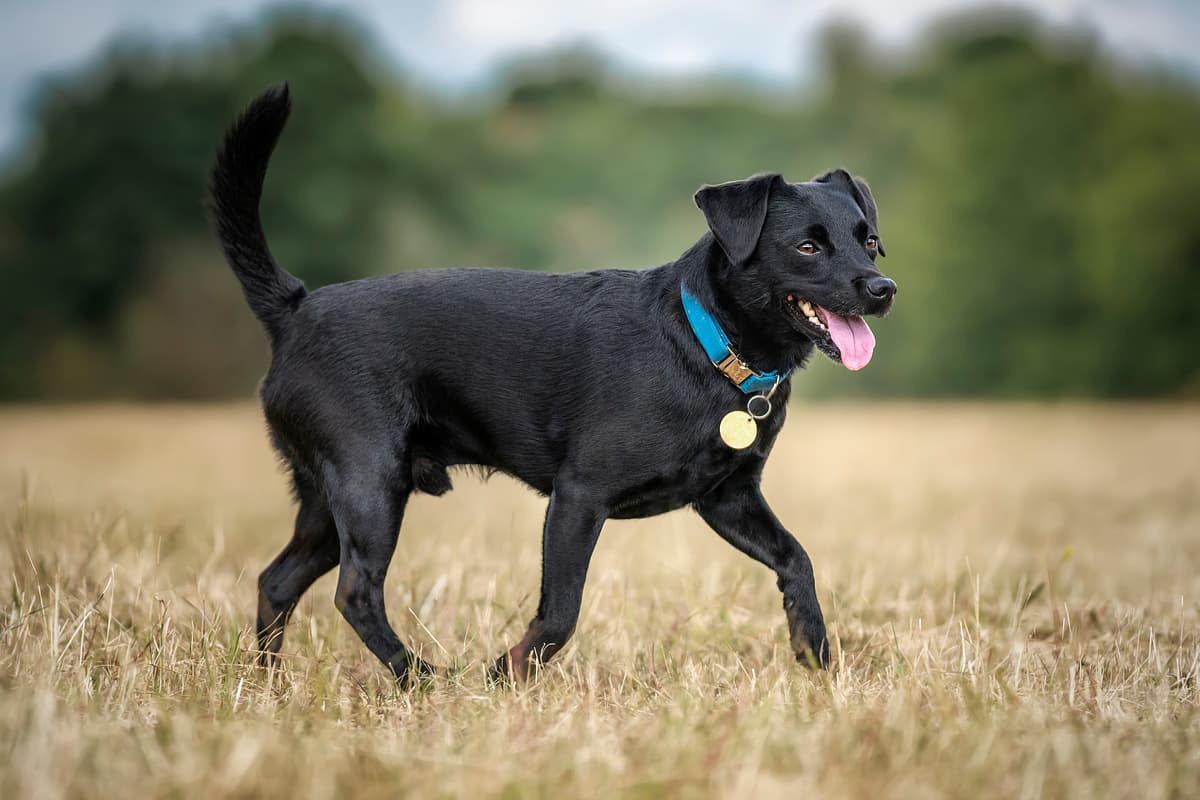Patterdale Terrier vs Labrador Retriever
Discover the differences between Patterdale Terrier and Labrador Retriever to make the best choice for your situation.
Try different breeds

Patterdale Terrier
Energetic, bold, and endlessly curious, this small terrier thrives on adventure and close companionship. Compact yet sturdy, it brings spirited loyalty to an active household.

Labrador Retriever
Eager, friendly, and intelligent, this breed loves being part of an active family. Their gentle nature and loyalty make them outstanding companions for all ages.
Quick comparison
Small
5–7 kg
Short, dense
12–15 years
4.5–6.5 kg
High energy
Large
29–36 kg
Short double coat, water-resistant
10–12 years
25–32 kg
High energy
Personality & behavior
Compare the personality traits and behavioral characteristics of both breeds.
Patterdale Terrier
Can be reserved with strangers, loyal to family
Quick learner, responds well to training
Very active, requires daily vigorous exercise
Enjoys games and interactive activities
Adapts best to active households and routines
Labrador Retriever
Warm and sociable with people and animals
Quick learner, responds well to training
High stamina, enjoys active pursuits daily
Loves games and interactive activities
Adjusts easily to new situations and environments
Care needs
Exercise, grooming, and daily care requirements
Patterdale Terrier
Eye disorders, patellar luxation
Labrador Retriever
Hip dysplasia, elbow dysplasia
Suitability
How well each breed fits different living situations and families
Patterdale Terrier
Challenging for novices
Needs experienced handler for training and boundaries
Needs more space
High energy may overwhelm small apartment settings
Excellent match
Thrives with daily exercise and active playtime
Supervision required
Can be boisterous and may not tolerate rough handling
Caution advised
Strong prey drive may cause issues with other pets
Not recommended
Dislikes being alone and may develop destructive behaviors
Labrador Retriever
Great choice
Patient and eager to please, Labradors are manageable for most first-time owners.
Not ideal
Labradors need space and exercise, so apartments can limit their activity needs.
Perfect fit
High energy and stamina make them excellent for active individuals or families.
Highly suitable
Gentle temperament and playful nature make them safe and loving with young children.
Very friendly
Generally sociable and get along well with other dogs and pets.
Prone to anxiety
Extended alone time can lead to boredom and destructive behaviors in this breed.
Breed strengths
What each breed excels at and their best qualities
Patterdale Terrier
- High stamina for outdoor activities
- Strong prey drive for vermin control
- Loyal and affectionate with family
- Compact size suits smaller living spaces
- Low grooming needs due to short coat
Labrador Retriever
- Friendly and sociable with people and dogs
- Highly trainable and eager to please
- Excellent with children and families
- Strong retrieving and swimming abilities
- Generally adaptable to various living situations
Challenges & considerations
Potential challenges and considerations for each breed
Patterdale Terrier
- Tendency toward stubborn or independent behavior
- High energy requires regular vigorous exercise
- Can be reactive toward unfamiliar dogs
- Prone to escape attempts if bored
- Needs consistent training and firm boundaries
Labrador Retriever
- Prone to obesity without portion control
- Can become destructive if under-exercised
- Heavy seasonal shedding requires regular grooming
- May develop hip or elbow dysplasia
- Needs significant daily physical activity
Ready to choose your perfect breed?
Learn more about each breed or compare other breeds to find the perfect match for your lifestyle.
Discover more helpful tools
Make use of our other free tools to get the most out of your pet experience
